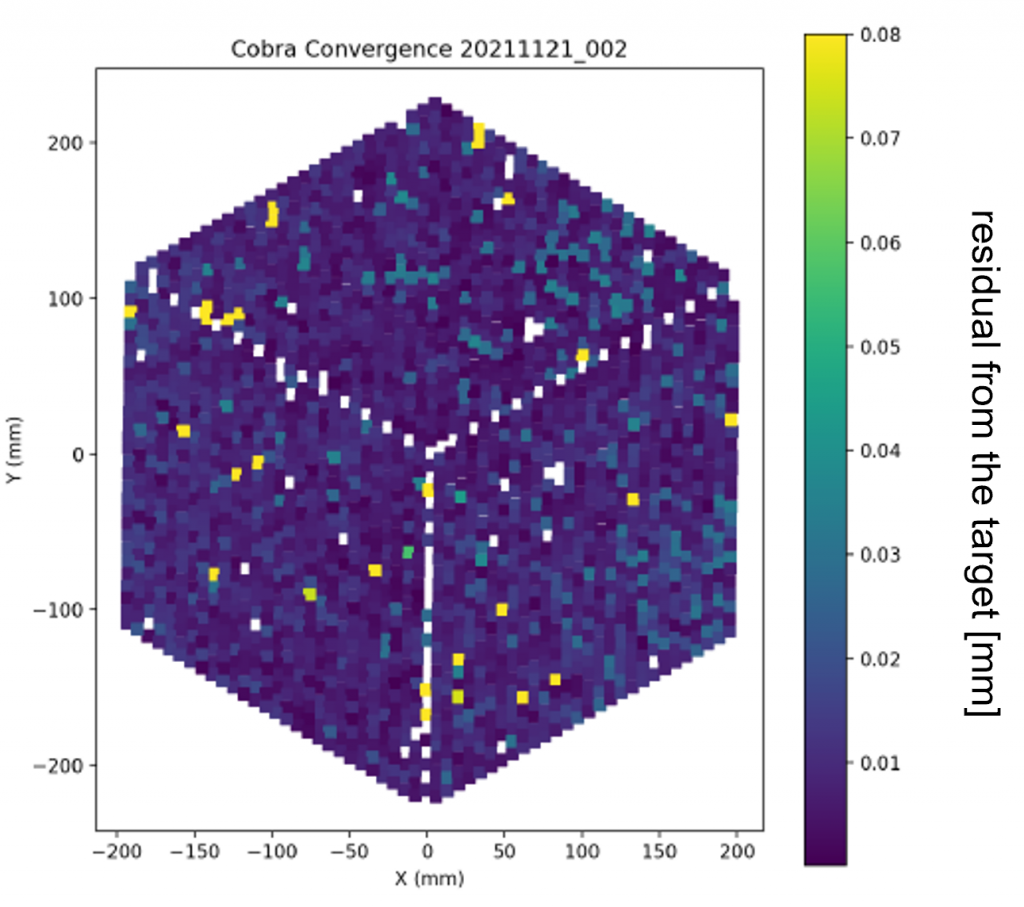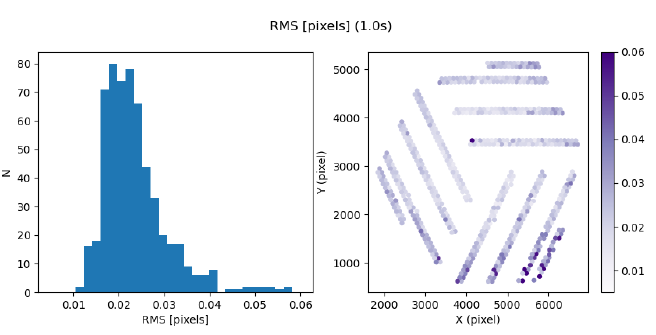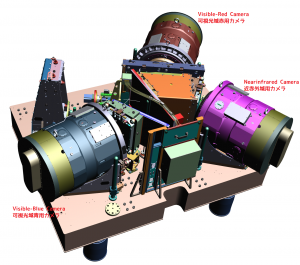Two months after on-telescope test by integrating subsystems, we had another engineering observation (engineering run) on three nights in November 2021. In this article, we’re going to tell a story about our work around the engineering nights.
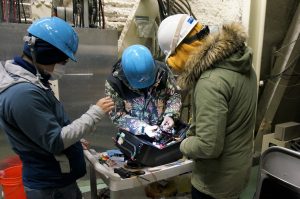
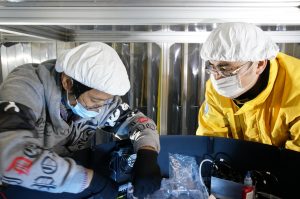
Although we made big progresses in fiber configuration etc. during the September run, we also found a couple of major issues on Prime Focus Instrument (PFI). To fix them, we needed two major modification works: (1) stabilizing operation of the PFI controller box, and (2) implementing the limit switches to move the instrument rotator safely.
To work on these modifications and apply a few more updates, the colleagues from Academia Sinica Institute of Astronomy and Astrophysics (ASIAA) in Taiwan, who is responsible for PFI development, visited Subaru telescope in Hawaii before the engineering observation. After all, we had to give up replacing the controller box with the new one unfortunately, but we succeeded in repairing and improving the current controller box and confirmed it runs stably for a long time. So we could operate PFI with it well during the observation. Installing the switches for the instrument rotator went well. Having passed the rotation test before putting PFI onto the telescope, we managed to carry out the engineering run with the instrument rotator operable. (In fact, the rotator operation was not allowed in September.)
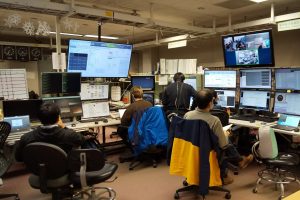
During this three-night engineering observation, we achieved another milestone: The auto-guiding cameras took the real sky images for the first time! The validation of auto-guiding functionalities, which was one of the major testing items during this run, was not fully completed unfortunately due to some troubles. But still we did confirm that the guiding basically works correctly. In addition, we tested fiber configuration at different telescope elevation angles, which was not done in September, and we acquired a set of spectra for development of the data processing software.
The next engineering run has been scheduled half a year later. Until then, we will continue developments and preparations of the instrument in both hardware and software by trying to resolve issues that were found during the last two engineering observations and those that will be found through data analyses.

